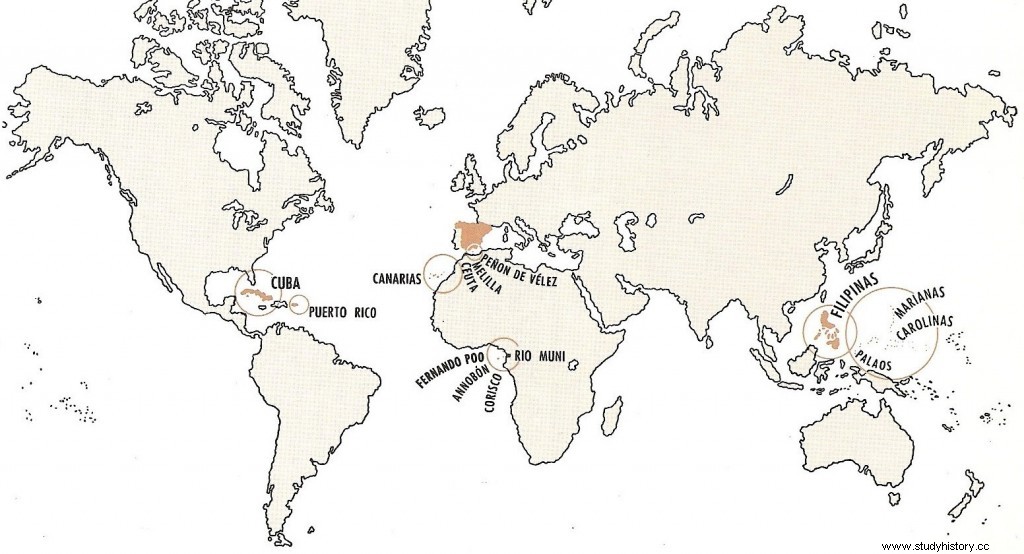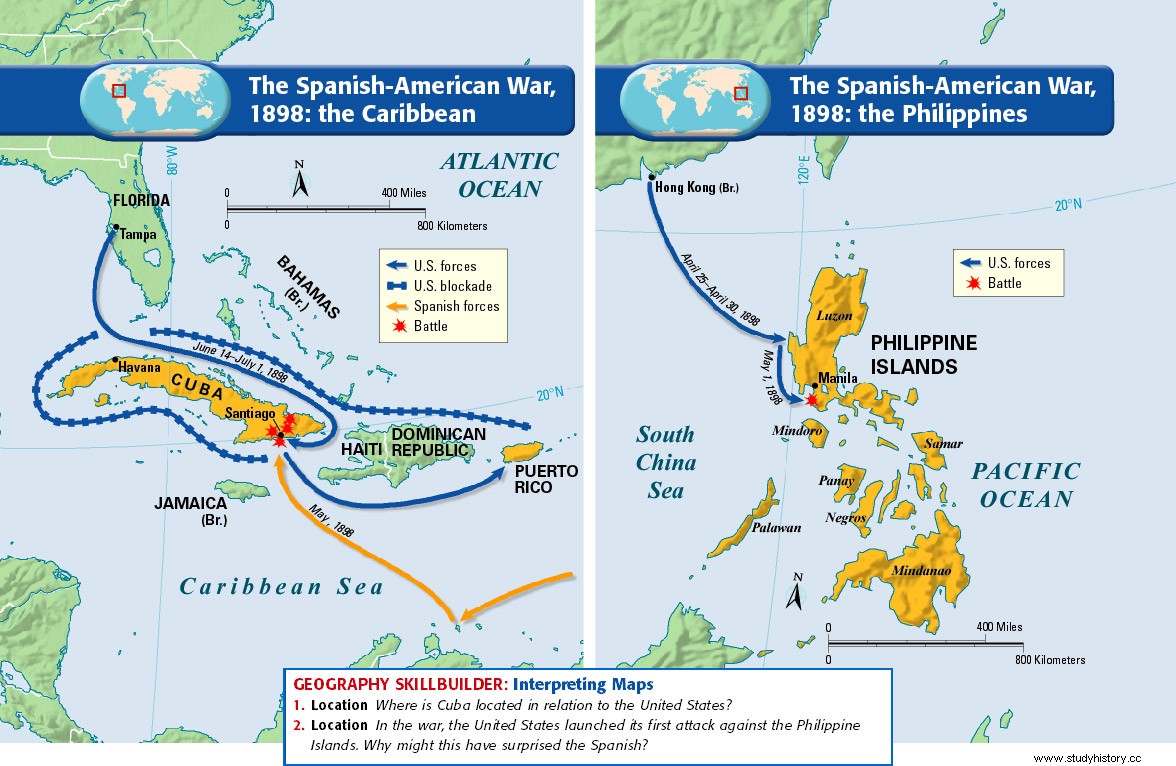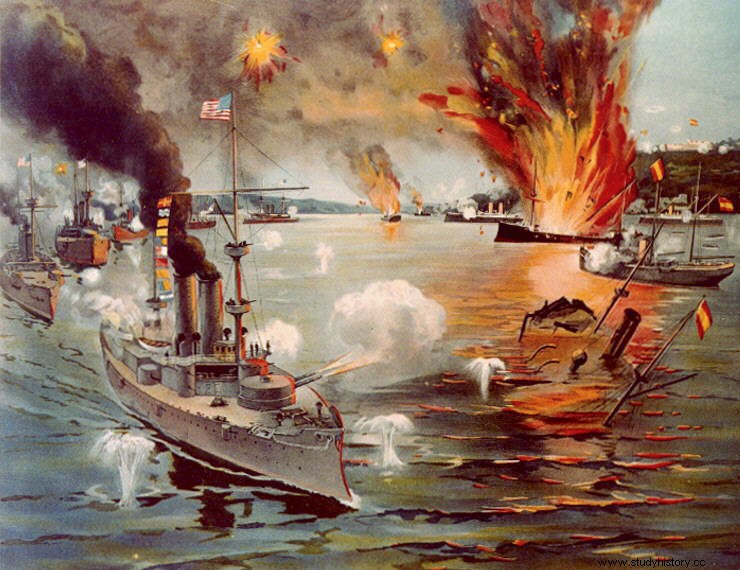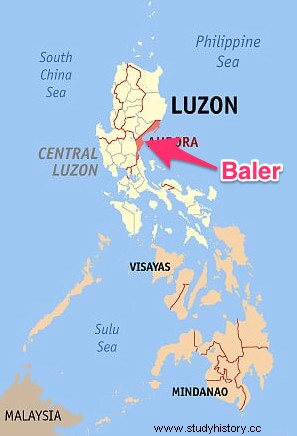The year 1898 has remained as a benchmark for the loss of the last remains of the Spanish overseas empire. The Spanish-Cuban-American War was the conflict that caused this disappearance, but the origins of this conflict go back years and arose in Cuba.

The first confrontation between Cubans and Spaniards began in 1868, the date on which the so-called Ten Years' War (1868-1878) began. At the same time that the Revolution broke out in the peninsula, war was declared in Cuba. This confrontation already meant a warning that relations between the metropolis and the colony were becoming difficult; Creoles called for more political and economic rights, the abolition of slavery and lower taxes. The Peace of Zanjón (February 10, 1878) meant the surrender of the rebel troops who achieved some improvements –freedom of the slaves who participated in the conflict and some political rights–, but remained far from their great pretensions:independence and total abolition of slavery.
As this first confrontation did not serve to settle the problems definitively, in 1895 another revolt broke out against Spain, triggering a new armed conflict. Both the abolition of slavery (1886) and the cessions of the Spanish government –full autonomy, equal political rights, universal suffrage, etc.– arrived late. For the leaders of the Cuban independence movement, led by the Cuban Revolutionary Party of José Martí and supported by US imperialist groups, these measures were insufficient.
The defining element in the conflict was US military intervention. The «casus belli » was the sinking of the North American battleship Maine, visiting Havana, but the causes of the intervention must be placed in the context of the imperialist race that characterized the turn of the century and in the growing expansionism of the United States, very interested in controlling the bordering seas, especially the Caribbean and the Pacific (Mahan doctrine). Precisely in these seas were the Spanish colonial remnants, defended by a metropolis mired in other problems and with a military capacity far inferior to that of the United States.

The war, as is well known, also extended to the Philippines and ended with the Spanish defeat, reflected in the naval battles of Cavite (Philippines), on May 1, and Santiago de Cuba, on July 3. The loss of the last remnants of the empire represented a severe blow to Spain's prestige and international role, but internally this fact was received with indifference and even relief. In some aspects, such as the economic one, the colonial loss was positive, since a lot of capital was repatriated and the enormous expense of the war was avoided.
In the Philippines the Spanish presence was smaller than in Cuba, limited to the cities and coastal areas. The natives and the mestizos asked for reforms as had happened in Cuba, demands that were channeled through the creation of the Philippine League (1893) led by José Rizal. But it will be the Katipunan led by Emilio Aguinaldo that initiates, in 1896, the armed rebellion against Spain. The conflict seemed to be channeled at the end of 1897, but the American intervention, within the framework of the Spanish-Cuban-American War, revived the war.

The Spanish defeat resulted in the Treaty of Paris (December 1898) by which Spain recognized the independence of Cuba and the cession of Puerto Rico, the Philippines and Guam to the United States. The war was therefore over by the end of 1898.
During the conflict, a detachment of Spanish soldiers was isolated from their lines in a town called Baler, located northeast of the island of Luzon. The Spanish combatants took refuge in a church and there they withstood a siege that lasted 337 days, until June 2, 1899, without surrender. Their isolation prevented them from knowing the evolution of the war as well as the signing of the peace agreement in December 1898. Meanwhile, a new confrontation had begun between the Filipinos and the Americans, in which the Spanish detachment no longer intervened.

Finally known the signing of peace, the Spanish troops honorably surrendered to the Filipinos. They did not consider them prisoners and allowed their transfer to Manila with full honors. From there they returned to the peninsula, disembarking in Barcelona on September 1, 1899. Already in Spain they received a sad reception without collectively recognizing any merit. They were soon forgotten.

The feat, which oscillates between heroic and absurd, has gone down in Spanish military history as a great milestone. The courage of these soldiers, wasted on an epic that could not go well, has become a token of courage even when the sacrifice was for an impossible cause. As on so many other occasions, these men were later ignored and their deed barely remembered and valued.
In the same year that the last of the Philippines returned to Spain, the government of Francisco Silvela sold the Carolinas, the Marianas –except Guam– and the Palau to Germany. Without military and naval bases in the Philippines it was impossible to exercise any kind of sovereignty over them. The Spanish empire in the Pacific was definitely disappearing.

BIBLIOGRAPHY AND SOURCES.
- ABC.es. (2016). Baler does not give up, this is how 57 soldiers defended the last Spanish territory in the Philippines . [online] Available at:http://www.abc.es/historia-militar/20140624/abci-ultimos-filipinas-baler-heroes-201406231602.html [Accessed 11/29/2016].
- Castle Alba, E. (2014). Return of the colonies . Cultivate Books:Madrid.
- Fernández Ros, J.M.; González Salcedo, J.; Leon Navarro, V.; Ramirez Aledon, G. (2016). History of Spain. Discover Series . Santillana:Madrid.
- Leguineche, M. (1998). I'll tell you. The true story of the last of the Philippines . Aguilar:Madrid.
- Site of Baler, (s.f.) In Wikipedia. Retrieved on 11/28/2016 from https://es.wikipedia.org/wiki/Sitio_de_Baler
[Edited on 12/10/2016]
- Martinez Shaw, C.; Alfonso Mola, M.; Elizalde, Mª D.; Medel, O. and Blanco, R. (December, 2016) Spain in the Philippines. The Adventure of History . . 218, p. 47-67.
